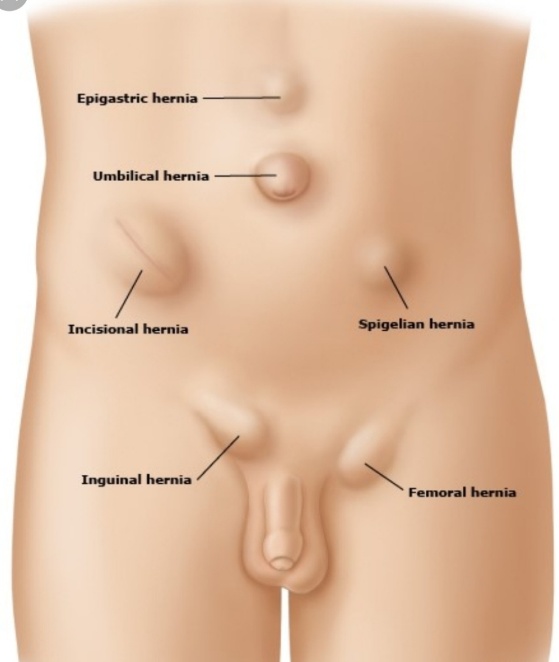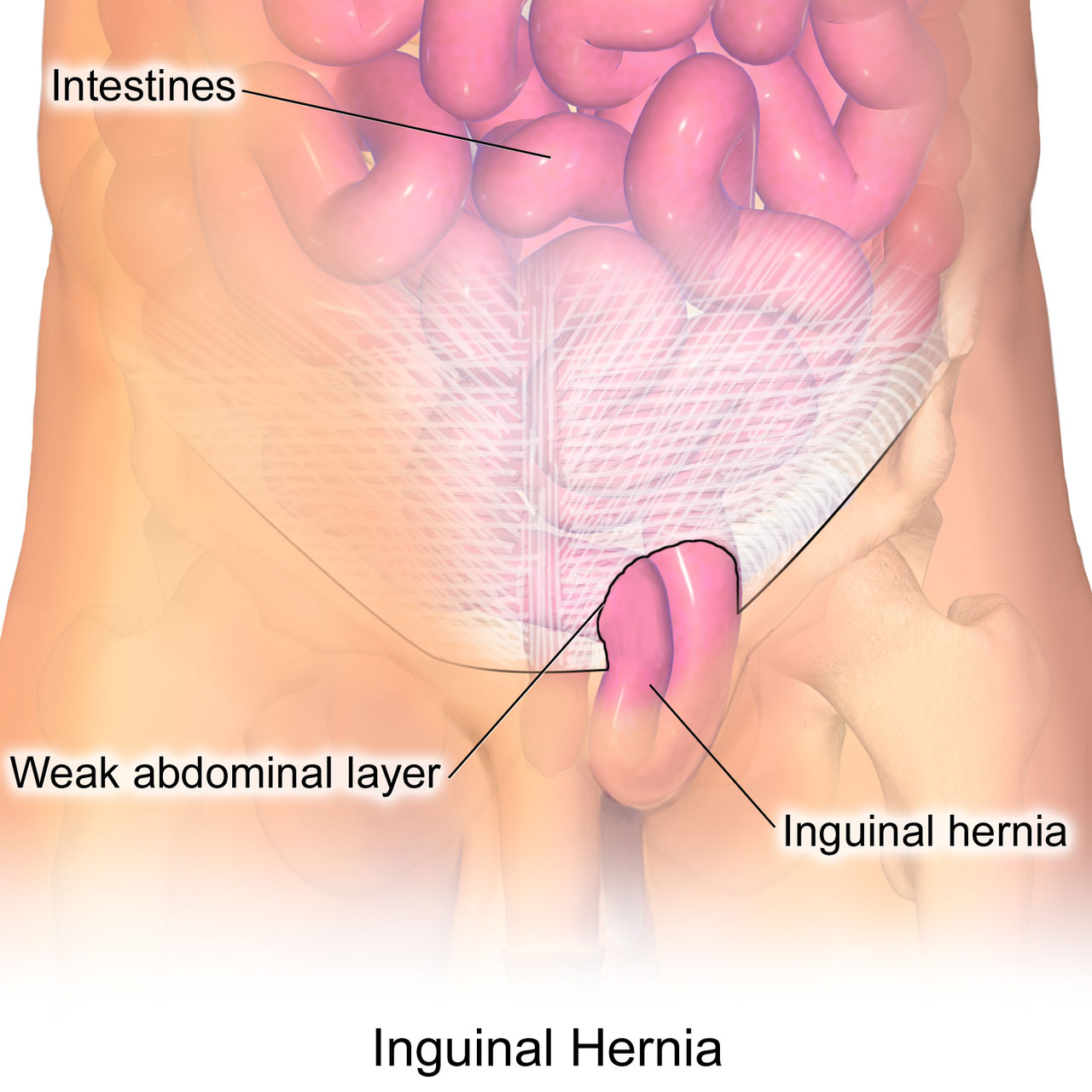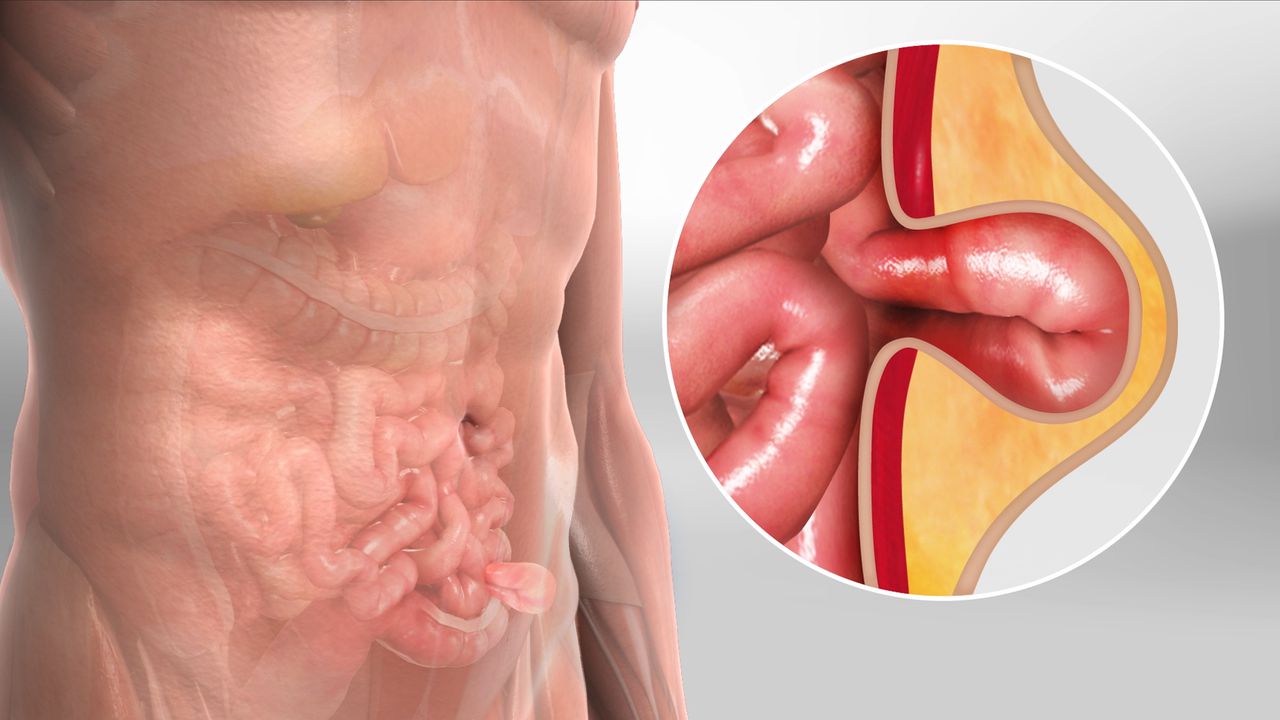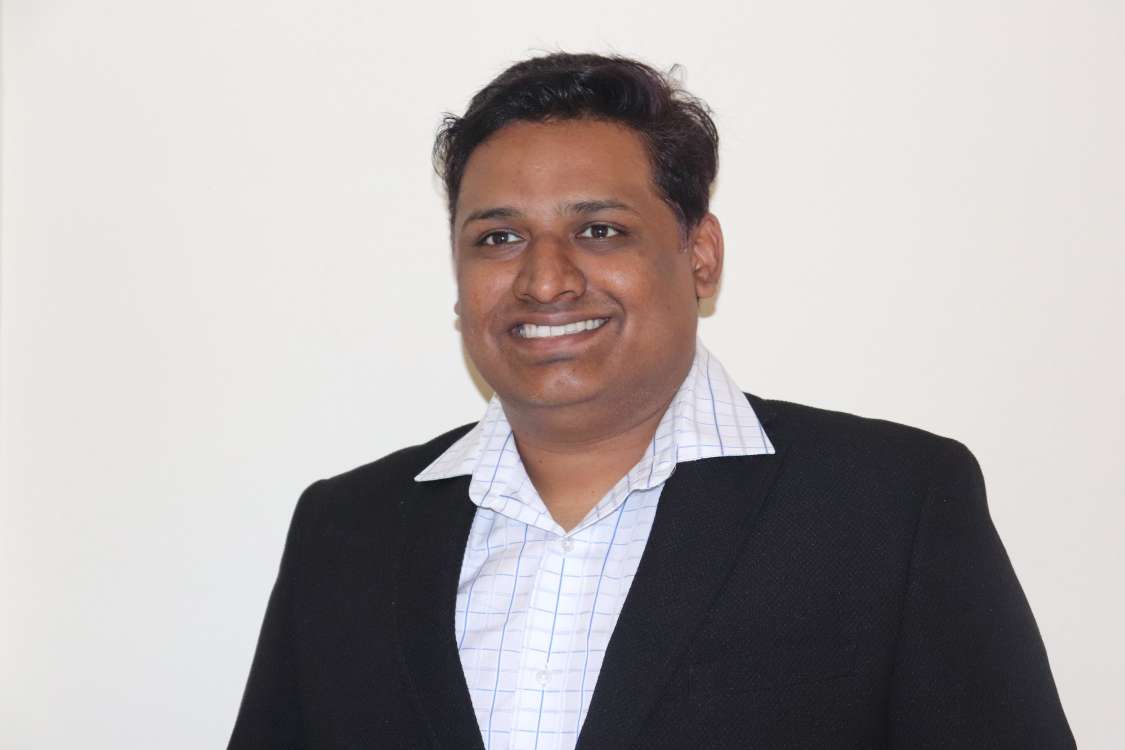What is a Hernia?
It’s only the strange exit of tissue or organ (, for example, digestive system, omentum, and so forth) through the mass of the hole which it regularly dwells. A hernia happens when within layers of the stomach divider debilitate and afterward lump or tear. This, thusly, can make a circle of digestive system or stomach tissue slip into the sac, causing extreme torment and other conceivably genuine medical conditions
Hernias without anyone else could conceivably deliver side effects as they are asymptomatic and can make slight extreme torment. This condition can potentially cut off the blood supply of the intestinal loop in the hernial cavity leading to necrosis, which may even lead to death.

What Causes Hernia?
Hernias are brought about by a blend of muscle shortcomings and strain. Contingent upon its motivation, a hernia can grow rapidly or throughout an extensive stretch of time. The vast majority of the reasons for hernia incorporate components and exercises which reliably put unpleasant high weight in the stomach depression and debilitation of stomach musculature.

Some common causes of muscle weakness or strain that can lead to a hernia include:
- a congenital condition that occurs during development in the womb and is present from birth
- aging
- Damage from an injury or surgery
- chronic coughing or chronic obstructive pulmonary disorder (COPD)
- Applying straining pressure due to constipation.
- In older adults straining at micturition due to prostatic enlargement
- a personal or family history of hernias
- pregnancy
- being older
- being born prematurely or with a low birth weight
- smoking (leading to weakening of connective tissue)
Symptoms of Hernia
There are several different types of hernias. Below, we’ll explore some of the most common ones.
A hernia in the abdomen or groin can produce a noticeable lump or bulge that can be pushed back in, or that can disappear when lying down. Laughing, crying, coughing, straining during a bowel movement, or physical activity may make the lump reappear after it has been pushed in. More symptoms of a hernia include:
- Swelling or bulge in the groin or scrotum (the pouch that contains the testicles)
- Increased pain at the site of the bulge
- Pain while lifting
- Increase in the bulge size over time
- A dull aching sensation
- A sense of feeling full or signs of bowel obstruction

In the case of hiatal hernias there are no bulges on the outside of the body. Instead, symptoms may include heartburn, indigestion, difficulty swallowing, frequent regurgitation (bringing food back up) and chest pain.
What Are The Types of hernia
Inguinal hernia
Inguinal hernias are the most widely recognized sort of hernia. These happen when the digestion tracts push through a shaky area or tear in the lower stomach divider, regularly in the inguinal trench. This sort is likewise more normal in men.
The inguinal trench is found in your crotch. In men, it’s where the spermatic string passes from the mid-region to the scrotum. This string holds up the balls. In ladies, the inguinal trench contains a tendon that helps hold the uterus set up.
These hernias are more normal in men on the grounds that the gonads dive through the inguinal trench not long after birth. The waterway should close totally behind them. Some of the time the channel doesn’t close appropriately, leaving a debilitated region. Investigate more about inguinal hernias.
Hiatal hernia
A hiatal hernia happens when some portion of your stomach projects up through the stomach into your chest cavity. The stomach is a sheet of muscle that causes you inhale by contracting and bringing air into the lungs. It isolates the organs in your mid-region from those in your chest.
This kind of hernia is generally regular in individuals more than 50 years of age. On the off chance that a youngster has the condition, it’s normally brought about by an inborn birth deformity.
Hiatal hernias quite often cause gastroesophageal reflex, which is the point at which the stomach substance release in reverse into the throat, creating a consuming uproar. Get more data on hiatal hernias.
Umbilical hernia
Umbilical hernias can happen in kids and children. This happens when their digestion tracts swell through their stomach divider close to their gut button. You may see a lump in or close to your kid’s paunch button, particularly when they’re crying.
An umbilical hernia is the main kind that frequently disappears all alone as the stomach divider muscles get more grounded, ordinarily when the kid is 1 or 2 years of age. On the off chance that the hernia hasn’t disappeared by 5 years old, medical procedure can be utilized to address it.
Grown-ups can likewise have umbilical hernias. This can happen from rehashed strain on the mid-region because of things like corpulence, pregnancy, or liquid in the mid-region (ascites). Gain proficiency with extra insights regarding umbilical hernias.
Ventral hernia
A ventral hernia happens when tissue swells through an opening in the muscles of your mid-region. You may see that the size of a ventral hernia decreases when you’re resting.
Albeit a ventral hernia can be available from birth, it’s all the more regularly gained eventually during your lifetime. Normal elements in ventral hernia development incorporate things like heftiness, exhausting movement, and pregnancy.
Ventral hernias can likewise occur at the site of a careful entry point. This is called an incisional hernia and can occur because of careful scarring or shortcoming of the abs at the careful site. Keep perusing to find more about ventral hernias.
About Dr. Abhijit Gotkhinde – Laparoscopic & Laser Specialist Surgeon

Dr. Abhijit B. Gotkhinde
Consultant Laparoscopic & Laser Surgeon
MBBS, DNB (GEN SURGERY), FMAS,
FIAGES, Fellow in Adv lap.
Dr. Abhijit B. Gotkhinde is one of the Qualified basic & advanced Laparoscopic Surgeon and the best Laser Surgeons in the Hadapsar, Pune. He believes in delivering the most authentic and top-class services in Piles, Fissure, Fistula Treatments also Hernia Treatments like Epigastric Hernia, Umbilical hernias, Epigastric hernia, Inguinal hernia, Femoral Hernia.
He has extensive experience in GI & Colorectal surgeries. He has a special interest in Laparoscopic surgery (cholecystectomy, Appendectomy, Hernia, Hysterectomy & Hiatal surgery) and minimal access proctology surgery. (Piles, fissure & fistula).
There are various types of Hernia occurred in people. These hernias types include hiatus, incisional, and umbilical hernias. Symptoms are present in about 66% of people with Groin Hernias. So for that many treatments can be done for various Hernia Treatment within Laparoscopic Surgery Treatment. After trying various methods without complete information and knowledge many people fail to achieve the desired Laparoscopic Surgery or Laser Surgery for Hernia and Piles Treatment.
A well Qualified Professional in Laparoscopic Surgeon has the knowledge, expertise, and experience to treat patients who suffer from Hernia Treatments like Epigastric Hernia, Umbilical hernias, Epigastric hernia, Inguinal hernia, Femoral Hernia and Piles, Fissure, Fistula Treatments also.
Ultra Care Clinic is proud to say that we offer affordable quality care without any compromise, by a Qualified surgeon Dr. Abhijit Gotkhinde.

